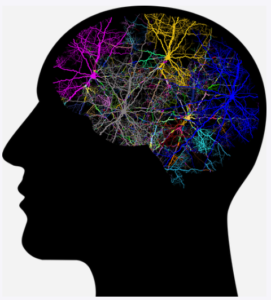ArlenJ.com
July 7, 2020

Theories as to how long it takes to form new habits and change mindsets have been around for decades. Plastic surgeon Dr. Maxwell Maltz said in the 1950s that it typically took patients 21 days to get used to their new noses after rhinoplasty. The same time frame was noticed when patients received prosthetic limbs as a result of amputation. Dr. Maxwell’s book, “Psycho-Cybernetics,” sold more than 30 million copies, with the primary thesis around the 21-day rule.
Five-time New York Times best-selling author Malcolm Gladwell is also well-known for his habit-forming theories. His most popular book, “Outliers: The Story of Success,” posited the 10,000-Hour Rule. Anybody wanting to achieve expert, world-class expertise in any industry is said to need 10,000 hours of practice and repetition. Herbert Simon and William Chase’s paper published in American Scientist magazine in the 1970s observed chess experts, including grandmaster Bobby Fischer. They concluded it takes 10,000 to 50,000 hours to be great at chess.
Researchers have worked tirelessly to both debunk and confirm all these habit-forming mindset theories. A 2009 study published in the European Journal of Social Psychology found that it took an average of 66 days for someone to form the habit of eating fruit for lunch. The British Journal of General Practice defines a habit or mindset as “actions that are triggered automatically in response to contextual cues that have been associated with their performance.” For instance, in today’s COVID-19 society, many people automatically put on masks before leaving their homes without thinking about it.
You cannot teach an old dog new tricks, according to U.S. folklore. But repetition ultimately becomes habit.
Neural pathways and behavior changes
The old expression “it’s just like riding a bike” epitomizes how neural pathways are created. The first few times dad took you out on your bike, you fell down, cried and got back up. Once you mastered the ability to keep your balance and pedal, your brain saved that knowledge, like a computer hard drive. It’s the same thing with driving a stick-shift car after 10-plus years not driving one. The neural pathways are instantly accessed whenever necessary.
The brain connect neurons with dendrites (nerve cell extensions) when it recognizes a habit or behavioral pattern. The more that behavior is displayed or activity is performed, the more dendrites that are produced. When you move to a new city, you’ll take a few wrong turns and not know exactly where’s your going on the road. After a few trips to work and back, you no longer need the GPS. The brain forms neural pathways when the activity is done repeatedly. Processes becomes faster and more efficient.
Dr. Deann Ware, a Dallas-based psychologist, wrote that brain cells communication and strength of connection are positively correlated. “The messages that travel the same pathway in the brain over and over begin to transmit faster and faster,” she wrote. Virtually all behaviors can become automatic with enough repetitions – free throws, typing, playing an instrument, etc.
ALPHA mindsets and repetitions
The subconscious is much tougher to change once we become adults. Thus more repetition is necessary to break bad habits and behaviors, while creating and sustaining new ones. The ALPHA by Prodigy Mindset Gym™ emphasizes high-repetition, conscious exercises that shepherd conscious command in men. The program is designed to be repeated three times (63-days) back-to-back. High-quality repetitions combined with neuroplasticity form those all-important neural pathways to the alpha brain wavelength and solidify new, positive habits.
Learn more about the ALPHA by Prodigy Mindset Gym™ today.

Recent Comments